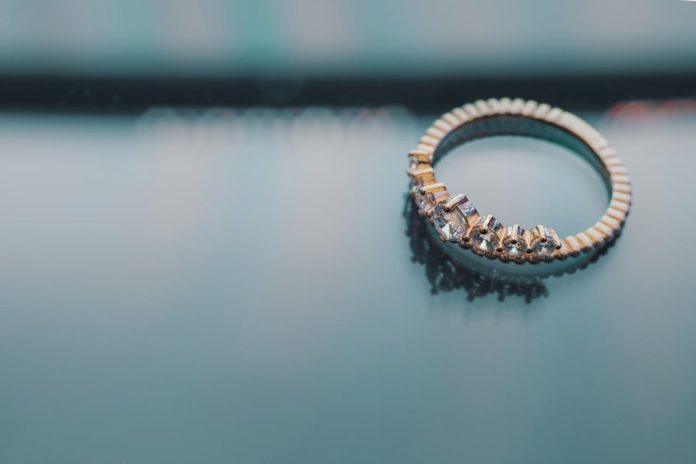The jewelry industry should often be associated with luxury, elegance, beauty, and sophistication. It also has a dark side, but in recent years, it has become a symbol of innovation and sustainability due to the advent of lab-grown diamonds. These diamonds grown in laboratories using various technological processes are as good as those mined diamonds and have a better attribute to them since they are more environmentally friendly.
This change in the trend towards cultured or lab diamonds is changing the concourse of the jewelry market to meet the need for sustainable luxury. In this article, the author will discuss how lab diamonds are leading the change in the jewelry industry and the effects of the change.
The Science Behind Lab-Grown Diamonds
Lab-grown diamonds are created using two primary methods: HPHT and CVD, the two main deposition techniques used to deposit diamond films. Both methods also replicate the natural environment where diamonds are formed at considerable depths in the earth’s crust. In the case of the HPHT method, a diamond seed is put in a chamber containing carbon, and the pressure and temperature are increased to the level of those in the Earth’s lower mantle. This leads to the formation of a diamond, as carbon crystallizes around the seed used during the process. The CVD method, however, uses an approach whereby a diamond seed is placed in a chamber containing carbon-containing gas. The gas is then ionized, carbon atoms are deposited on the seed, and it grows into a diamond.
These processes result in creating of gemological diamonds that are chemically, physically, and optically indistinguishable from natural diamonds. The only difference is that one is sourced from the other. Due to this, it has become possible to synthesize diamonds with fewer inclusions and better quality, thereby providing consumers with a dependable substitute for mined ones.
Ethical and Environmental Benefits
Perhaps the greatest value of cultured diamonds is that they are absolutely ethical and sustainable. Historically, conventional diamond mining has been common with human rights violations, such as the use of child labor and work hazards. Moreover, mines have been known to cause negative effects on the environment, such as tree chopping, soil degradation, and water pollution.
Grow diamonds, on the other hand, do not require mining as they are grown in laboratories. This does away with the human rights problem and reduces the environmental impact by a considerable margin. Lab-grown diamonds are used in their production process, use less water and energy, and produce less waste than mining diamonds. Lately, customers have become more conscious of such ethical and environmental issues, which is why the popularity of lab-grown diamonds still increases daily.
The Market Response
Lab-grown diamonds have significantly disrupted the jewelry industry because it is challenging to differentiate between them. At the beginning, traditional jewelers were somewhat reluctant to embrace these diamonds because they seemed to threaten their established business models. Nevertheless, as the market changed and the demand for other types of diamonds increased, most companies in the industry realized that lab-grown diamonds could also be useful and started to use them.
Today, many famous jewelry brands offer lines with lab-created diamonds and include them in their products to attract various clients. That said, lab-grown diamonds are not limited to affordable fashion jewelry but have since penetrated the market with engagement rings. Such a policy of inclusiveness has helped expand the market to the extent that diamonds are now more accessible than before.
Furthermore, the fact that lab-grown diamonds are transparent and distinguishable from natural diamonds attracts customers who want genuine products and can easily track their source. Every diamond is accompanied by a certificate that shows the origin and how it was cultured, giving the buyer confidence and guarantee that the product is not a product of forced mining.
Technological Advancements and Future Trends
Lab-grown diamonds follow the ever-changing technology in this process, further improving the jewelry industry. However, one of the most recent developments is the ability to select diamonds based on certain specifications. Thanks to these new technologies, consumers are provided greater flexibility in size, color, and clarity regarding diamonds. Thus, consumers can create unique pieces that represent their personalities.
Furthermore, scientists are looking at new uses for lab-grown diamonds apart from normal jewelry uses. These include electronics, medical devices, and quantum computing, and they demonstrate the potential a material of such magnitude can have.
Moving to the future of the jewelry industry in particular, it is evident that the role of lab-grown diamonds will become even more significant. These diamonds will also become affordable with time as technology advances and the cost of production shrinks. It is important to note that through this democratization of diamonds, the market will continue to grow and push for sustainability among industries.
Conclusion
That is, Lab-grown diamonds are undoubtedly the future of the jewelry industry. Due to their ethical and environmental positives alongside technologies, their offers are considered suitable substitutes for mined diamonds. Since consumers are becoming more aware of the environment and are choosing more sustainable and ethically sourced products, lab-grown diamonds will continue to be popular.
This shift shows a change in consumer values and a dynamism in the jewelry industry. The decision to accept manufactured diamonds is the right step towards a future that will be much more humane and friendly to the environment and the world while leaving the fascination with diamonds eternal.




































